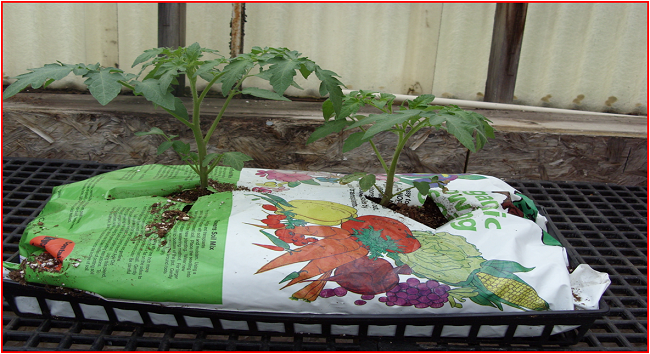
In this modern age of gardening, growers have access to a large variety of growing media or medium to choose from. Expanded clay pellets, vermiculite, perlite, coco coir, rockwool, straw, sand, sphagnum moss, lava rock and soil-less potting mixes (organic and inorganic): it’s a hefty list already and there are many more mediums that I haven’t mentioned. With the introduction of alternative gardening techniques like hydroponics and vertical gardening (stacking method) and the imaginative innovation of today’s growers, we can now find plants growing anywhere that it’s possible to supply them with adequate water, light, and elemental nutrients.
Even container gardening (potted plants) has found itself with a more modern, 21st century edge. Nearly any type of container can be used to house the roots of a plant. Old mailboxes, broken pallets from a local factory, discarded rain gutters: if you can fill something with growing medium and a plant, it can easily become an interesting new addition to the garden. This article discusses how to recycle old items into unique containers for your plants. Many plant enthusiasts have made it their purpose to re-purpose items that have the capacity to house plants. I like to think of modern farming and gardening as an industry of innovation and now I would like to offer into the mix a simple but useful gardening idea, but first, a question. Why spend hard earned money on expensive potting containers, when you can grow your plants straight out of a bag?
From lettuce to tomatoes, growing plants in a bag of your favorite potting mix is a unique option to consider. And it can be done in 5 simple steps.
Step 1
Choose what type of potting mix and what size of bag to use. This should be determined by the needs of the crop being grown. Use smaller size bags when growing things like lettuce and bigger ones for tomatoes and peppers.
Step 2
Poke holes on the sides and bottom of the bag for drainage using a knife or other tool; I use a bamboo kabob skewer; it makes the perfect size drainage hole. More holes lead to better drainage.
Step 3
Cut slits for each plant to be grown in the bag. I’ve found that cutting an X into the bag and folding the flaps under works well. Again, the number of spaces cut will be determined by the crop being grown.
Step 4
Prior to planting, moisten the potting mix (if desired).
Step 5
Transplant seedlings as you normally would into any other growing medium or start directly from seed. Both methods work fine.
Treat plants growing in a bag as you would any container plant. Water regularly and fertilize often. How frequently you need to fertilize will depend on the individual elemental nutrient needs of each plant. Growing directly from a potting mix bag will encourage extensive root growth that should encompass the entire space inside the bag. The amount and speed of drainage will be controlled by how many holes are poked into the bottom of the bag. Water slowly at the base of the plant and allow the entire bag to fill with water to ensure complete saturation of the entire root zone. Pick up a bag of your favorite potting mix today and add another trick to your gardening repertoire.
Kyle Ladenburger is an avid indoor and outdoor gardener.
Related Articles & Free Email Newsletter Sign Up
Foliar Feeding Might Help But Your Plants Still Need More
How to Create a Balcony Garden in Limited Space
How to Properly Grow Plants in Containers




Comment here